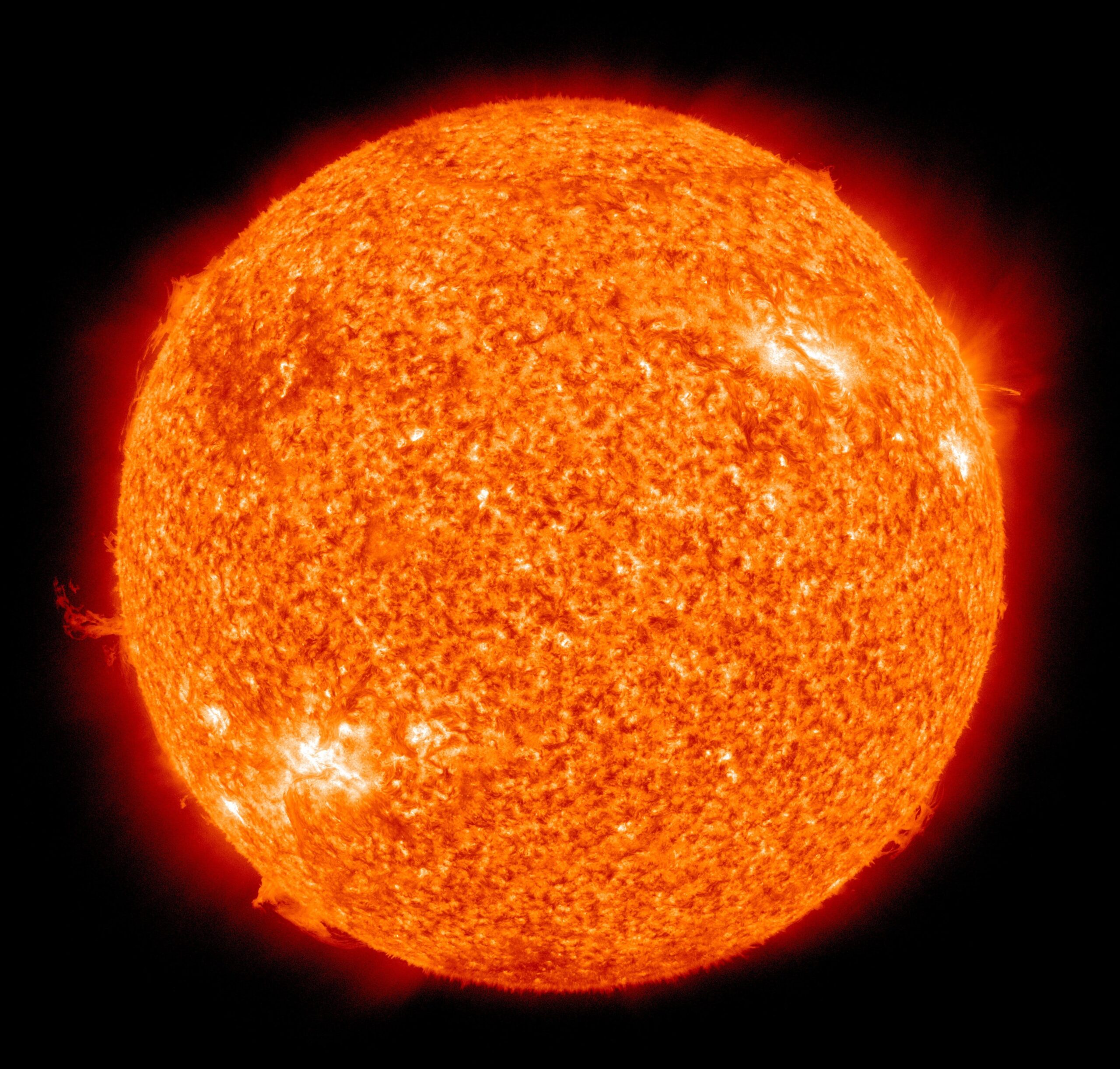The usual things we know about the Sun is that it’s the star (yes, a star — ball of gas like any other stars in the night sky) at the center of the solar system, and of course hot. We’ve rounded up interesting, mind-blowing (and even frightening) facts about the Sun in this gallery and let you realize how amazing and cool our Sun is.
You think that the Sun is a static big ball of fire. While it does not move away, it otherwise rotates. The Sun travels at 220 kilometers per second and is 24,000 to 26,000 light years away from the galactic center. It takes the Sun about approximately 225 to 250 million terrestrial years to complete just one orbit around the Milky Way’s center.
As anything in the universe capable of aging, the Sun also ages. At this period, the Sun is middle-aged at 4.6 billion years old. It has burned off half of its hydrogen, having enough of it left to continue to burn more hydrogen for the next 5 billion years. It seems there’s no middle-age crisis for the biggest star!
The “end of the world” may happen, and it sounds frightening. But it’s inevitable that the Earth will, in about 130 million years, be engulfed by the Sun. It burns helium, during which the time will grow bigger to the point that it will consume Earth as well the other planets near it — Mercury and Venus. Afterwards, the Sun will become a giant red giant.
- The sun is now 4.6 billion years old
- The sun is a “yellow dwarf” (G-type main sequence star or G2V)
- The sun’s diameter measures 1,392,684 kilometer, about 109 times the size of Earth
- The sun’s circumference at equator is 4,370,005.6 kilometers
- The sun has a mass of 1,989,100,000,000,000,000,000 billion kg, about 333,000 times that of Earth.
- The sun’s temperature reaches at 5,505 degrees Celsius, or 9,941 degrees Fahrenheit
The Sun accounts for about 99.86% of the total mass of the solar system — almost 100%. This means that if you have to add the masses of each planet, it would amount to just .24% of the solar system’s entirety.
Because of its enormous size, the Sun would handle as much as 960,000 Earth’s in their spherical form. On the other hand, if the Earths were flattened to fit inside the hollow Sun, then it would fit about 1,300,000 squished Earths inside.
The Earth orbits around the Sun of about 150 million kilometers, while the light moves at 300,000 kilometers per second. Divide these and the result is the approximate time of 500 seconds, which is equivalent to 8 minutes and 20 seconds. So it takes the sunlight about 8 minutes and 20 seconds to travel from the Sun to the Earth.
So how far is Sun is to Earth? The answer is 149,600,000 kilometers.
The Sun will collapse after attaining its red giant phase. It will still retain its enormous mass, but it will include about the volume of Earth. When this occurs, the Sun will be called the white dwarf.
To be exact, the sun’s temperature reaches at 5,505 degrees Celsius, or 9,941 degrees Fahrenheit, or 5,778 Kelvin.
The force of gravity of the sun’s “surface” (the photosphere, that is) is 28 times stronger than the force of gravity of Earth’s surface. Let us take an example: if you weigh 100 kilos here on the Earth’s surface, you would feel you’d over 2,800 kilograms on the Sun’s surface. It’s because the Sun’s gravity pulls all of its own mass into an almost-perfect spherical shape.
Yes, that’s a lot of light-bulbs that the Sun could provide!
A solar eclipse occurs when the moon passes between the Sun and the Earth. The moon blots out the sun, and its shadow over the Earth makes everything dark. We only get to see and take photographs of the solar eclipse from the Earth, but any types of eclipses look much more amazing when seen from a different perspective — the space. Italian astronaut Samantha Cristoforetti took spectacular shots of the solar eclipse on March 20, 2015 when during her many days in space expedition on board the International Space Station.
If the sun disappears or is destroyed for some unknown reason, we would have no idea for about eight and half minutes that the sun had gone. So what happens to the Earth if the Sun disappears? The Earth will would fly off in a straight line into space, rather than fall towards towards the “dead” Sun.
What happens next after that would be more dire, but for the moment, the Earth will retain much of its heat. However, the lack of Sun’s radiation will leave us feeling chilly within days, and within weeks our temperature will be absolutely below zero. Along with the absence of the Sun is the absence of its protective magnetic field around our solar system, called the heliosheath. Without the heliosheath, we will be exposed to the harmful radiation and other particles traveling through space.

